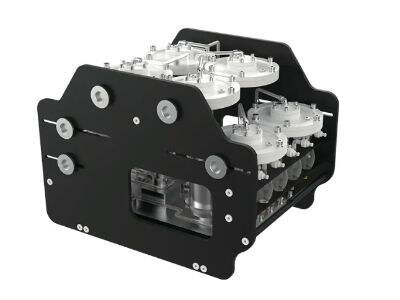Many sorts of microbes, or tiny living things, live in aquatic environments such as oceans and lakes. These microbes play a critical role in maintaining the water's health. But how do we monitor these little guys and prevent them from contaminating our most precious resource? And that is where special tests called ten-Channel Microbial Sampler come in to help us know what’s going on in our water.
What is Microbial Diversity?
Microbial diversity simply means that there are lots of different types of microbes in a location. The diversity of microbes in oceans and lakes is extremely high, with thousands of categories of small, water-dwelling life. These microbes perform a lot of beneficial functions. They help decompose dead plants and animals, recycle important nutrients, and even make oxygen, which is necessary for all living things.
How do You Test Water Quality?
Water quality is (incredibly) essential to the survival of plants, animals, and even humans, who depend on clean water for drinking and recreation. Ten-channel microbial tests are laboratory tools scientists use to closely scrutinize the microbes that call the water home. These tests allow them to determine whether harmful bacteria or germs exist in the samples that might make people or animals sick. By routinely monitoring these little germs, we can determine whether the water is suitable to swim, fish, and pursue other pleasurable activities in and around water.
Watching Changes in Microbes
Microbial populations in oceans and lakes can vary rapidly. These shifts can be driven by factors such as pollution, temperature changes and nutrient levels in the water. Ten-Channel Microbial tests allow scientists to monitor these numbers over time. This information helps their comprehension of what is going on in the water and how we can affect it. By understanding how to monitor these changes, scientists can help preserve the health of our aquatic ecosystems.
Better Ways to Test the Health of Water
Before this, people described water quality with outdated methods, often using chemical tests or simply observing surface water. These techniques may sometimes fail to catch subtle but significant changes in microbes. Microbial tests using ten channels are a better way to test water quality—taking a closer look at the particular types of microbes within it. This significant understanding enables us to diagnose early detection and intervene to maintain the ecosystem as normal as possible.
Helping the Environment with Microbial Tests
Using the power of microbial tests can protect the oceans and lakes from pollution, habitat degradation and other threats through partnering scientists and conservationists. Studying the microbial diversity in these waters can help us improve plans to conserve and protect these environments for future generations. Having more information about the microscopic species in the water allows us to target specific strategies to promote our aquatic ecosystems’ health and sustainability.
So, ten-channel microbial assays are essential tools for the monitoring of ocean and lake health, under prediction and coping strategies. We can work with microbial diversity, water quality, variations of microbial population, optimization of monitoring methods, and the use of these tests in conservation for efficient protection of these ecosystems. Seaward is devoted to assisting research and conservation projects that work to preserve our Earth's precious aquatic environments. United, we can do our part to help ensure that our waters remain clean and safe for all life.

